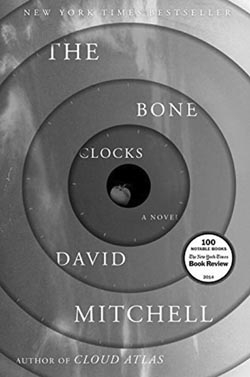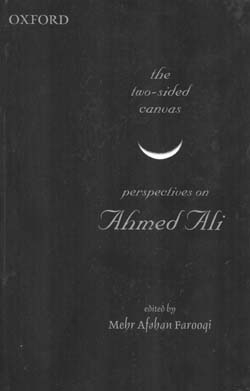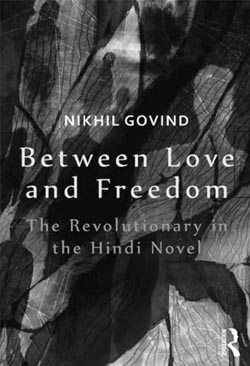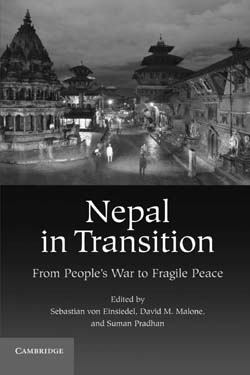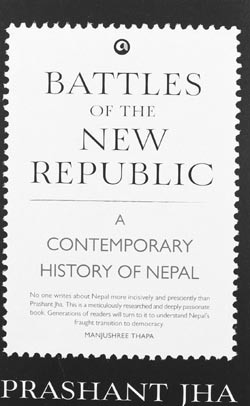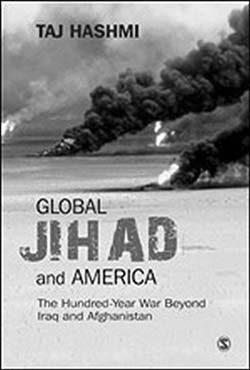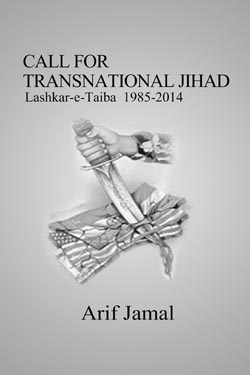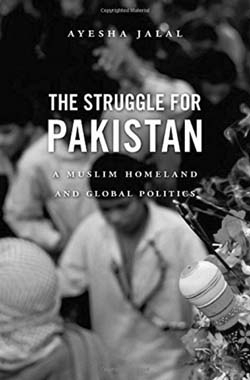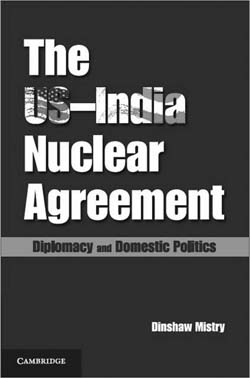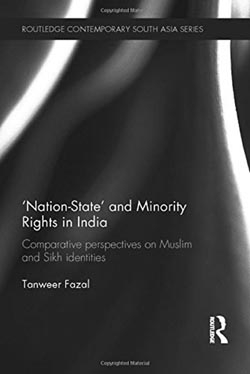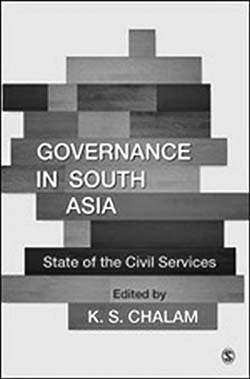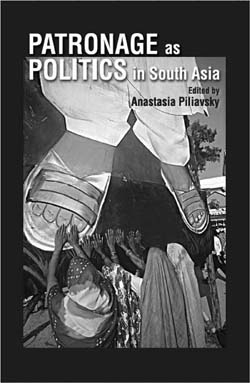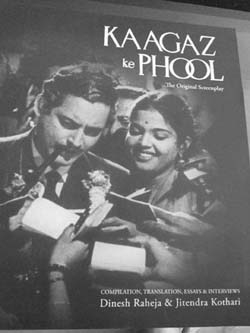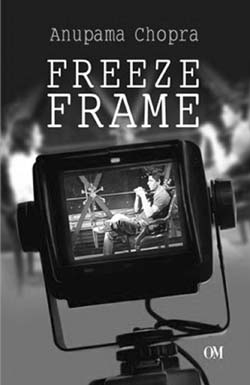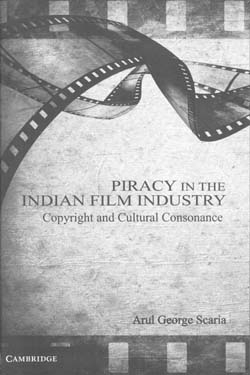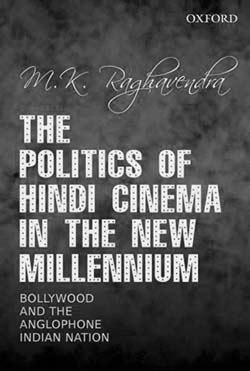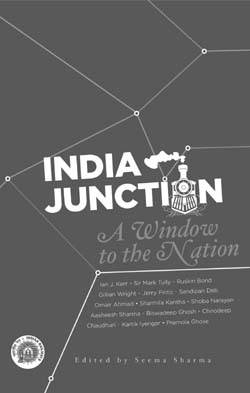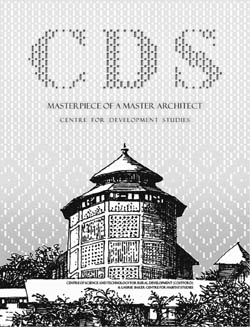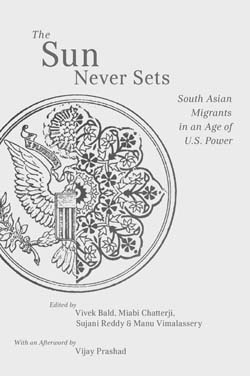To understand the wider intellectual-political significance of this theoretically nuanced and methodologically sophisticated study of the Deccan’s past, one has to have recourse to a rather precise and systematic interpretive framework.
Archives
February 2015 . VOLUME 39, NUMBER 22015
I’d already heard many good things about Himanjali Sankar’s young adult novel Talking of Muskaan, so I was really looking forward to reading the book.
2015
The title of ChitraViraraghavan’snovel,The Americans, indicates that the Indian diaspora in the United States of America has indeed come of age. It also affirms that Indians in the US are not quite the outsiders who are trying to assimilate into the melting pot or are the hyphenated
2015
Atale of a sleepy town with a tunnel that has its own history, sea with its beach beckoning you to come closer to listen as it whispers its own story and a lake whose depth of water sends its own invitation.
2015
‘Life is a terminal illness’, says the character of Hugo Lamb in David Mitchell’s latest work The Bone Clocks that was also recently long listed for the Man Booker Prize.
Ahmed Ali (1908–1994) is better known in the English-reading world as one of the founder members of the Progressive Writers’ Association in 1936, as one among the four of the (in)famous Angaray group.
The figure of the youthful revolutionary is the space, both fictional and historical, real and metaphorical, from which the concerns of this book arise.
Dennis B. McGilvray in his book Crucible of Conflict: Tamil and Muslim Society on the East Coast of Sri Lanka, ex-plores the ethnography of the Eastern region of Sri Lanka, originally inhabited by Tamil Hindus, Moors, small number of Sinhala chena cultivators and Vedda hunters.
Reconciliation in post-war scenario is a complex process which involves genuine efforts by multiple stakeholders, not just the state to build a peaceful society.
In Kathmandu we discover, all the stories of the past are suffused with myth, and legends run circles around historical facts.
Nepal in Transition: From Peoples War to Fragile Peace straddles two choices—pulling in the writings of influential scholars who have politically explained the Maoist insurgency—Mahendra Lawoti (academic), Deepak Thapa (social scientist) and Devendra Raj Panday, (policy maker and civil society leader),
Prashant Jha’s Battles of the New Republic chronicles the two eventful decades, after 1990, of Nepal’s experiment with democracy. Written in a non-linear, lucid narrative, and with an enviable access to political and intelligence sources, the book provides powerful insights into the Maoist insurgency…
In The Song of the Shirt: Cheap Clothes Across Continents and Centuries Jeremy Seabrook makes the despair of the garment workers of Bangladesh convincing.
The withdrawal of US troops from Afghanistan in 2014, leaving behind about 10000 odd soldiers for training and limited operations, in a sense symbolizes the end of an era.
2015
Pakistan has been boxed in a peculiar paradoxical situation–on one hand it is pronounced as a state perpetrating militancy and on the other a victim itself of terrorism fighting rather hard to counter militancy.
aj Hashmi evidently utilized his four year stint at the US Department of Defence, Asia-Pacific Center for Security Studies in Honolulu, very well. He mentions conversations with student practitioners with service in theatres of the myriad and ongoing American wars.
This is a chilling account of the origins, ideological moorings, national ambitions and global outreach of one of the world’s most proscribed terrorist groups—the Lashkar–e-Taiba (LeT), designated as a Foreign Terrorist Organisation by the United States since December 2001 and also implicated by the United Nations since December, 2008 in its front denomination,Jamaat-ud-Daawa (JuD).
Ayesha Jalal’s latest work is a reflective account of Pakistan’s contemporary history and the nascent effort by its citizens to reimagine Pakistan, free from military dominance and as a ‘more resilient federal union’.
A year ago no one could have imagined that Pakistan would change its course from a rickety democracy to a hybrid-military rule within less then two years after general elections in May 2013.
Three classes of people trample all over Pakistan, the military dictators and terrorists it spawns with such remarkable fecundity, and the foreign commentators who write books of a terrifying banality that purport to explain why it does so. These are usually sniggering sermons that hold it up to the rest of the world as a cautionary tale, schadenfreude masquerading as scholarship. T.V. Paul’s The Warrior State is the latest hatchling of this sorry clutch.
Thanks to the excesses following 9/11 (racial profiling, waterboarding, rendition to other countries, etc.), counterterrorism has been a subject of much public scrutiny in the US. The recent disclosure of the Senate Intelligence Committee’s reports on the CIA torture programme is a case in point.
The conflict curve of Sri Lanka, Pakistan and Kashmir insurgencies is at a fragile and vulnerable state of stability. Sri Lanka has given a massive mandate for a ‘new democracy’; stability and accountability, yet it does not take away the shadow of instability that might follow.
2015
India has one of the world’s largest military forces and it is also among the largest military spenders in the world, both in terms of military expenditure and arms imports. Nevertheless, the Indian military faces huge challenges.
The Indo-US nuclear agreement was a watershed in many ways. First, it led to the de-hyphenation of India and Pakistan and their relations vis-a-vis the United States.
Six years after India conducted a series of nuclear tests in 1998, strategy the Indian Army issued its conventional war fighting doctrine called the Indian Army Doctrine 2004. The doctrine, which later came to be known as ‘Cold Start’, drew a lot of attention in the strategic circles.
Both India and Pakistan started their nuclear weapons quest in earnest in the early 1970s, both reached weapon capability around 1990 and both became overt nuclear powers in May 1998.
One of the best known authorities in the field of Indian religious studies, Rowena Robinson has written widely on the minority religious communities. Initially, her main preoccupation was with popular Christianity and the theme of formation of Christian identities and how they have been articulated, constructed and reconstructed.
The established wisdom in international relations is that a major state seeking to secure its interests in world affairs has essentially three options to choose from. If it is powerful enough, it can play the geopolitical game of balance of power.
2015
With numerous incidents of what the RSS offshoot, the Dharm Jagran Samanvay Samiti calls ‘ghar wapsi’, (250 Muslim families being reconverted to Hinduism in Agra in November, 2014, and 40 Mazhabi Sikh families who had embraced Christianity being reconverted to Sikhism in Amritsar in December 2014),
In Muslim Politics in Bihar, Mohammad Sajjad, an assistant professor of history at Aligarh Muslim University, breaks new ground in a number of ways.
Amongst the regional organizations, SAARC, the South Asian Association for Regional Cooperation, has not attracted much scholarly attention.
Capitalism is cruel. Yet, for a poor, economically backward country, an evil necessity. The spread of capitalist development promises prosperity with malls, multiplexes and condominiums but its underside can be grotesquely ugly.
A day after the winter session of parliament ended in December 2014, the National Democratic Alliance (II) Government promulgated two ordinances aimed at taking forward economic reforms in the insurance and coal sectors arguing that ‘the country can no longer wait’.
For any observer of politics in South Asia, there is always a question waiting to be answered. What explains the enthusiastic participation of the electorates in the ‘new’ democracies/semi-democracies of South Asia (whenever they get an opportunity!) remains a puzzle for them. Why elections are such grand spectacles bringing a festive spirit among the masses is intriguing for an impressed westerner as she assesses the ground reality.
More than fifty years after its initial release Guru Dutt’s Kaagaz ke Phool (Paper Flowers, 1959) remains one of Bombay cinema’s most enigmatic films.
Freeze Frame is mainly a collection of interviews that noted film critic Anupama Chopra had conducted for the show, ‘Picture This’, on NDTV between 2007 and 2011. Apart from this are interviews published in Vogue, and articles by Chopra contributed to Open Magazine in 2010–2011.
Chattopadhyay’s book provides an interesting research intervention in the field of visual and television study as well as in the general understanding of an image world which was a precursor to the current digital context of consumerism. It illuminates after all the crucial moment of post liberalization, a transition period, during which the chaos of new ideas, subjectivities, and a changing urban materiality was being churned out at the very point of origin in the world of advertisement, and presented back to the viewer for interpretation. Pointing at the sudden significance of commercials post liberalization, with the increase of satellite cable television channels and coming in of multinational brands, in contrast to cinema which served as the earlier popular vehicle of modernity during, before and after Independence, the book deftly demonstrates how commercials in the contemporary time stood at the helm of negotiating this transition in 1990s India from a receding socialism to advanced capitalism.
The story of piracy is the story of a discourse that manages to remain hidden from the overarching gaze of the Government. Irrespective of strong or weak enforcement systems prevalent all over the world to stop piracy, this underground discourse has survived and replicated. The traditional scholarship on piracy presents a clear-cut binary.
Most people tend to view autobiographies ambivalently partly because there is something narcissistic about them and partly because you do wonder, from time to time, if you are really interested in all the details of someone else’s life. Also, the best autobiographies are usually insensitive to the people who figure in them and the worst ones are a dead bore because they hold back so much.
In a quasi-romantic and quasi-realist statement, ‘much to my disappointment, the shelves were full of texts on Hollywood and European filmmakers with nothing substantial on contemporary Indian directors’ (p. 10), Tula Goenka states, clearly, her objective behind writing the book, recovers directorial voices that contribute heavily to the process of filmmaking but still remain unheard.
2015
Rang De Basanti (Rakeysh Omprakash Mehra, 2006) is a film that unfolds itself through a narrative-within-a-narrative structure where the India of 1920s is juxtaposed with the India of 2005.
Rachel Dwyer’s Picture Abhi Baaki Hai is a de-tailed account of the films produced in India from 1991 to 2001 and the nuanced ways in which the imagination of India and its ‘New Middle Class’ enters the circuit of Bollywood.
2015
For many of us Bombay films were central to our coming of age. As we went in and out of cinema halls in the seventies and early eighties, the hero who failed to make a deep impression was Rakesh Roshan, son of the famous music composer Roshan.
Agitating The Frame, a collection of Zizek’s six essays, has an ambitious plan with lofty objective which attracts, while the very same turns out to be unmanageable monstrosity.
When M.K. Raghavendra declares in his recent book The Politics of Hindi Cinema of the New Millenium: Bollywood and the Anglophone Indian Nation that ‘Bollywood is not mainstream Indian cinema’, he ruffles quite a few feathers.
This anthology brought out by the Ministry of Railways is an eclectic collection of articles by several authors—Sir Mark Tully, Ruskin Bond and Sandipan Deb and experts on the Indian Railways such as Ian Kerr.
If we are what we eat, then there is a steady stream of archival material emanating from our kitchens that must necessarily be taken seriously, sociologically speaking. Food, at the first instance, is all about nutrition and sensory perceptions. However, for the attentive listener, food is also the story of who we are as a people.
2015
Over centuries, maharajas and magicians, palaces and palanquins, elephants and erotica, dynasties and deserts, temples and tigers, poetry and poverty, snake charmers and spices—all have been instantly associated with India and have been the enduring reference points for this country.
This is an extraordinary book and the author, Atul Gawande, is an extraordinary surgeon, one sensitive to pain, but more importantly, to history. In my review of one of his earlier books, Complications (a collection of essays previously published in the New Yorker), for The Book Review
Aviewing of Kailash and Manasarovar: A Quest Beyond the Himalaya quite easily leads one to agree with Deb Mukharji that of all the elements of nature, perhaps the strongest influence on the human psyche has been exercised by mountains’ (p. 34). I use the word ‘viewing’ quite deliberately because it is Mukharji’s amazing photographs that enliven his interesting text. Together, both are ample testimony of the author’s empathy for the high reaches and lonely spaces of the Himalaya. A former civil servant by profession but a mountaineer and photographer by instinct and passion, the author describes in meticulous detail the fascination of the Kailash and Manas region over millennia. Kailash, he writes, ‘is where convictions remain suspended, myths endure and sparks of understanding illuminate reason’ (p. 245).
This book is a monograph on the architecture of Centre for Development Studies designed by architect Laurie Baker. The Centre for Development Studies is regarded as a masterpiece of Laurie Baker and this book offers a documentation of the project. The project is compiled in the book in the
form of many photographs and drawings of various buildings of CDS.
Cultural contacts between India and Southeast Asia were effectively broken with the coming of colonialism to Asia. British, French and Dutch colonial ambitions divided up Southeast Asia and the administration of their areas was kept entirely separate.
The glory of the British empire in the nineteenth and early twentieth century was often associated with the phrase ‘The sun never sets on the British empire’. It was a statement of pride and celebration and the book under review by leaving the second half of the phrase has raised questions about historical continuities and contemporary relations of global power.
Peter Robb’s third book drawn from the diaries of one Richard Blechynden (1759–1822)—architect, surveyor, and civil engineer, who moved permanently to Calcutta in 1791—focuses on the ‘special meaning and function’ of friendship among Europeans, and between Europeans and Indians in early colonial Calcutta.
2015
Modern Times is the first of a promised two part work in which Professor Sarkar sets out to review the current state of 19th and 20th century Indian historiography, and to add to his own already remarkable oeuvre.
In 1674, Mahamat Prannath (1618–1694 CE) and his followers sought to find an audience with the Mughal Emperor Aurangzeb (1619–1707) in the imperial capital of Delhi.
This monumental work, I gather, is an adaptation from the American edition of 2011 and not having consulted the original, I was naturally left wondering just how much the author ‘adapted’ with a South Asian readership in mind. It was, however, quite obvious to me that the present work represents the cumulative insight and expertise that Hiltebeitel has acquired over the years, particularly in relation to the study of the epics and dharma literature.
We are living in a present which is tense for many reasons. Identities are sought to be forged on the basis of particularly manufactured images of the past, in which aviation technology and plastic surgery and nuclear weapons go about almost in an existential abandon.




